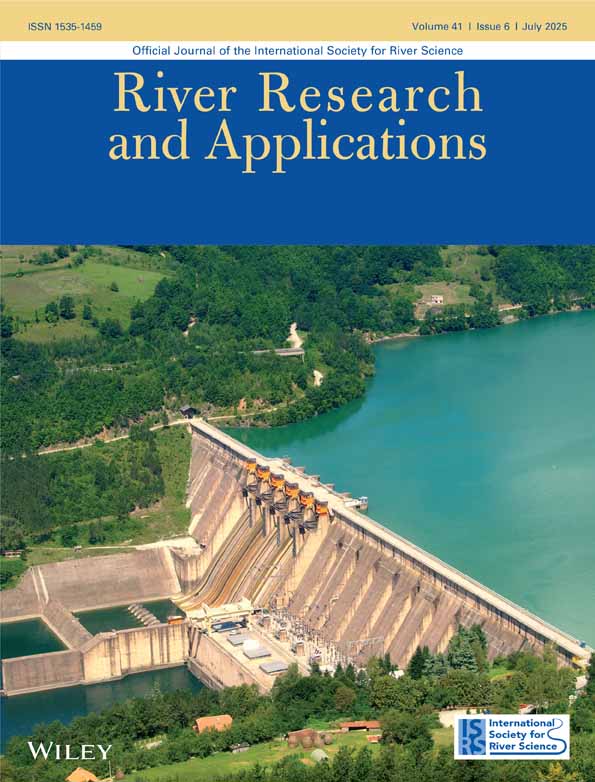Improvement and optimization of fish guidance efficiency (FGE) at a behavioural fish protection system for downstream migrating Atlantic salmon (Salmo salar) smolts
Abstract
A behaviourally based fish protection system was installed in a power canal at a hydroelectric facility on the Exploits River, Grand Falls-Windsor, Newfoundland, Canada. The river contains an anadromous wild Atlantic salmon (Salmo salar) population in the order of 30 000 returning adults annually. A floating louvre and bypass was installed to protect downstream migrating smolt from entering penstocks and turbines at the end of a power canal at the generating facility. The efficiency and effectiveness of this protection system has been evaluated since 1997 through a combination of conventional tagging (passive integrated transponder, Floy and streamer tags) and use of radio telemetry. Detailed velocity profiling was also conducted along the louvre array, bypass, and throughout the canal to assess the hydraulic performance of the protection system. Initial monitoring in 1997 and 1998 indicated low fish guidance efficiencies (FGEs) for smolt of 25 and 24.3%, respectively. In 1998, a digital spectrum processing (DSP) telemetry system, with multiple antennae, was installed along the louvre array to assist in identification of problem areas where fish were bypassing the louvre. Integration of DSP results with hydraulic monitoring suggested fish loss was associated with hydraulic turbulence and irregularities in the guidance velocities. In 1999, a ‘to scale’ physical model of the power canal, louvre and bypass system was constructed at a hydraulic laboratory to evaluate structural and operational improvements to the system. Field results and hydraulic scale modelling resulted in changes to the canal, louvre angle and bypass entrance, prior to operation in 1999 and 2000. Subsequent monitoring of smolt out-migration in 1999, 2000 and 2001 indicated substantial improvement in unadjusted FGEs to 54.0, 65.3, and 73.3%, respectively. The paper demonstrates application of the results of detailed monitoring studies, including use of sophisticated telemetry and laboratory hydraulic modelling, for evaluation and optimization of effectiveness of a fish protection system. Copyright © 2003 John Wiley & Sons, Ltd.




